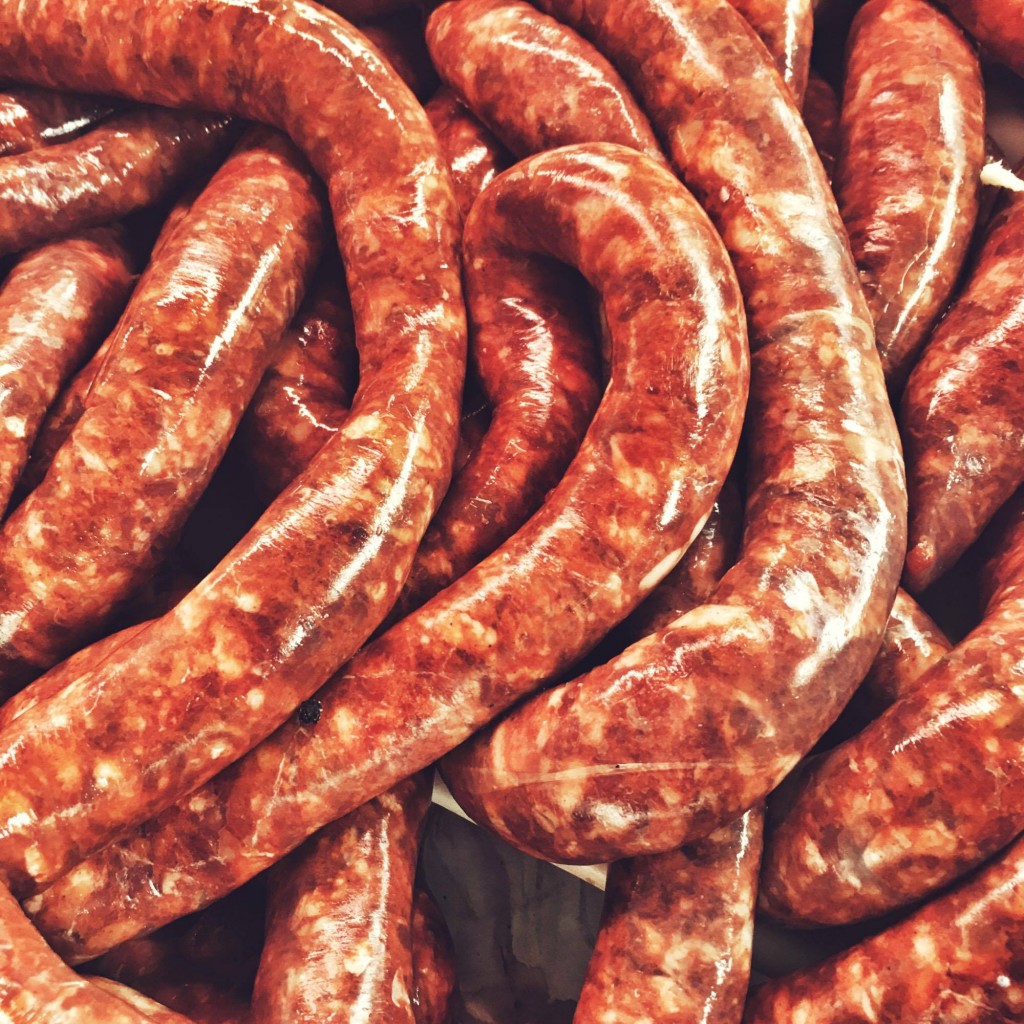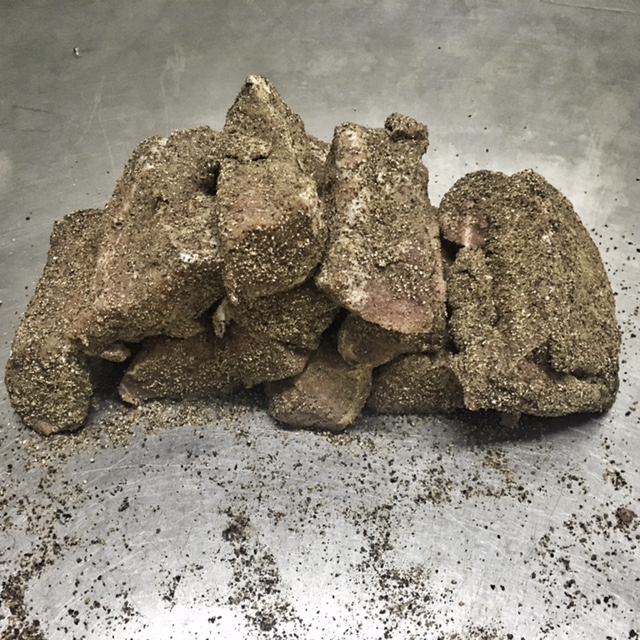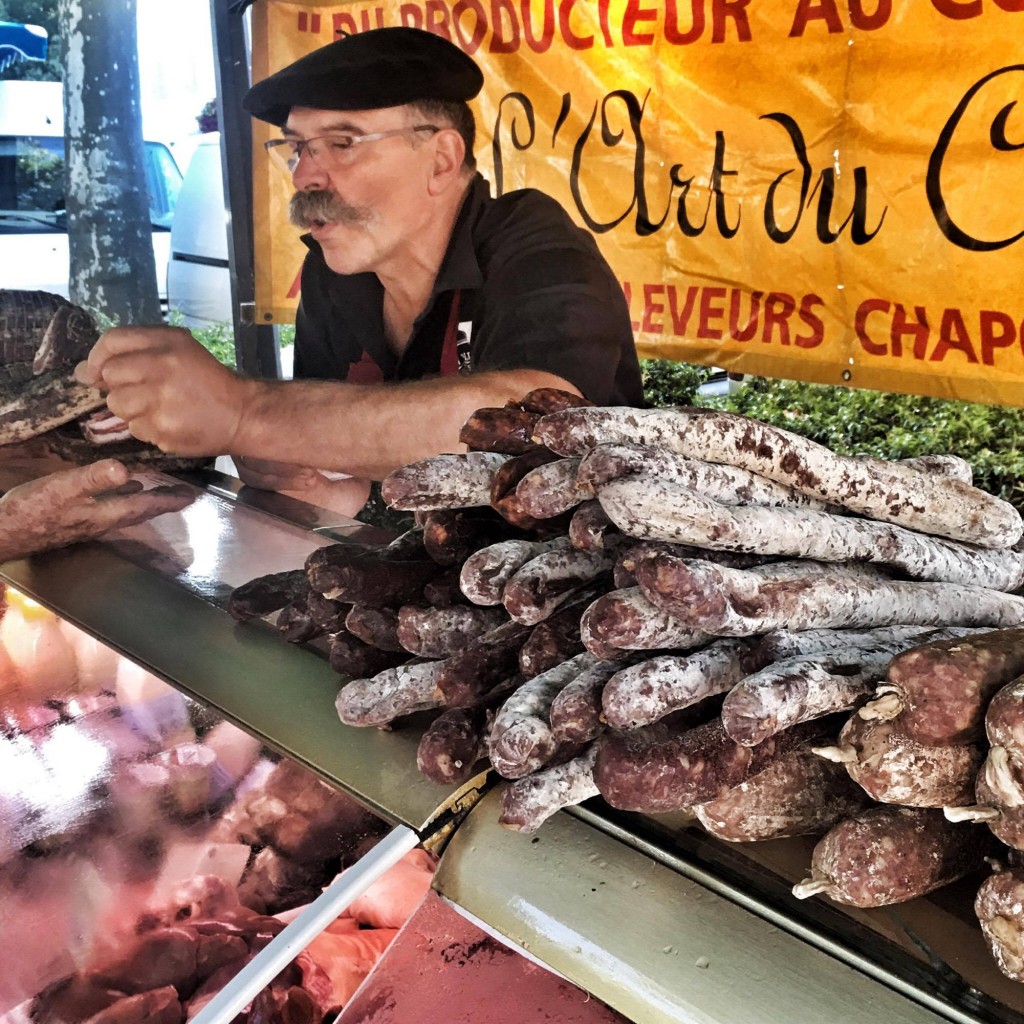After working with Dominique and the Chapolards on the farm for a few weeks, I finally got their system down. On Monday, we would receive nine or ten pig carcasses, fresh from the abattoir. Each day of the week, we would break a couple carcasses and slowly deplete the pork supply hanging in the walk-in refrigerator. In their place, were our conversions of traditional French charcuterie offerings such as pâtés, blood puddings, paupiettes, graton, and fricandeaux. All of these products, along with fresh cuts like chops and roasts, would be sold at one of the four weekly markets the Chapolard family attends. By the end of each week, the walk-in refrigerator would set empty and delicious charcuterie would be on French tables all across the South of France.
That’s what I call nose-to-tail!
The Chapolards offerings can be sorted into four categories:
- Dried Products:Noix de Jambon, Coppa, and Filet sec
- Fermented Sausages:Saucisson, Saucisse seche, and Chorizo
- Cooked Products:Pâtes, head cheese, roasts, Graton, and blood pudding
- Fresh Products: various fresh sausages, roasts, ventreche roulee, and kabobs
- and of course, the breadwinner of any charcutier, the Jambon de Bayonne.
Here’s the problem – Jambon Bayonne is incredibly hard to produce on a large scale. The hams take up a lot of space and they occupy that space for a year or more. In addition, it's an absolute crapshoot every time you open one up. If any of the meat inside the ham, specifically next to the thighbone, is traumatized before or during slaughter, you have essentially created an 18-month-old stink bomb full of deadly bacteria. Any excess blood left in the ham can also lead to rotted flesh.
Being a charcuterie-making French family, the Chapolards naturally made Jambon Bayonne. Dominique estimated 20% of the Jambon Bayonne his family produced was inedible by the end of the 18-month drying period. He decided this spoilage had to end. After some research and experimentation, he discovered the family should cease making Jambon Bayonne and instead use those hams to make Noix de Jambon.
To create Noix de Jambon, Dominique isolates whole muscles from the ham and dries them individually. This reduces the hang time from 18-months to just six weeks. It also allows him to pick out traumatized protein and other unwanteds that could potentially be hazardous to preservation.
Noix de Jambon is one of Dominique’s best selling items at the farmer's markets. Sliced thin, it is perfect for aperitifs or as a substitute for ham in your favorite recipe.











